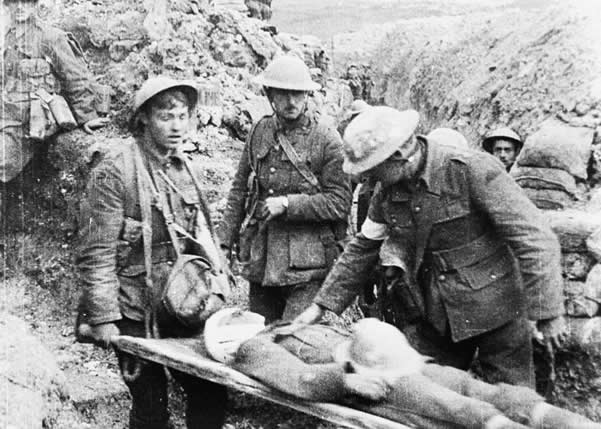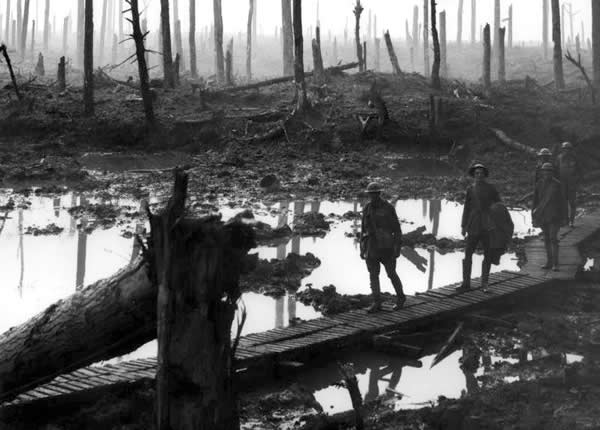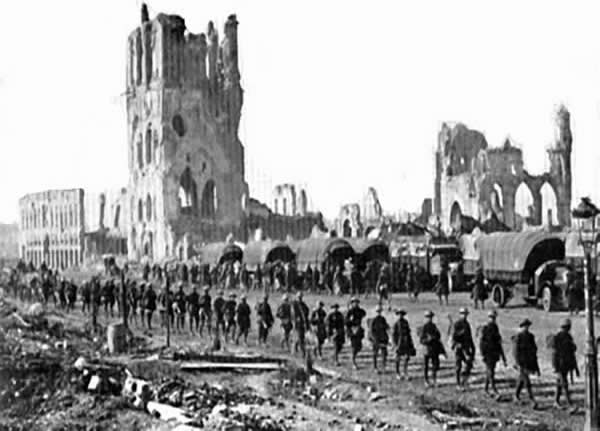Indian troops on parade (colorised) Fought from 18-22 December 1914 the Battle of Givenchy saw an initially advancing British force face strong opposition (and counter-attack) from a solidly entrenched German force around the village of Givenchy (in Pas-de-Calais, and which was held by the British).
With the French under heavy pressure at Arras the order was given that the British force would provide relief by attacking the Germans around Givenchy, thus preventing German reinforcement of Arras from that quarter at least.
Sharp fighting broke out on 19 December when Indian troops from the Lahore division launched an attack, successfully capturing two lines of German trenches. However their success was short-lived: a prompt and aggressive counter-action pushed the Indian troops back out again.
The following day the British force was caught somewhat by surprise by a heavy attack launched by the now reinforced Germans around Givenchy. The force of the German attack was clearly focussed against the trenches held by the same Indian troops who had initiated operations on the previous day.
Defensive tactics were severely hampered by the conditions of the Indian trenches, heavily waterlogged as they were. Consequently the German force broke through and managed to occupy part of Givenchy until two British reserve battalions were brought into action, with the result that the village was back in British hands by the close of 20 December.
Nevertheless the German counter-attacks continued and several salients were driven into the British line until reinforcements from First Army were brought up by Douglas Haig the following day. With the fresh influx of men - relieving the Indian division - the line was restored to its original position.
Thus fighting died down on 22 December with the opposing lines where they had started. British casualties ran at twice those of the German force: 4,000 against 2,000.
Source firstworldwar.comCommonwealth War Graves
Lest We Forget
From 1914 to1918 97 men and one woman went to War - 20 men never came home. Read the life history of each man and learn where they died
Those Who Gave Their LivesLemsford local History Group WW1 Records
Memories & Letters
Memories from the people of Lemsford Parish – letters from the Front and home and much, much more
Local Parish Magazine
From the Bishop's Hatfield Parish Magazine 1914 to 1918, Church- Social - War Records
Servicemen of Lemsford
War records from 98 men who went to war. We show their memories images and why we should never forget them.
5 Facts the Great War
Battles of WW1

Battle of the Somme
1 July - 13 November 1916The British suffered around 420,000 casualties, the French 195,000 and the Germans around 650,000. Only in the sense of relieving the French at Verdun can the British have claimed any measure of success.

Battle of Passchendaele
31 July - 6 November 1917Passchendaele village lay barely five miles beyond the starting point of his offensive. Having prophesied a decisive success, it had taken over three months, 325,000 Allied and 260,000 German casualties

The First Battle of Ypres, 1914
October 19 to November 22, 1914First Battle of Ypres saw the BEF sustain 7,960 killed, 29,562 wounded, and 17,873 missing, while the French incurred between 50,000 and 85,000 casualties of all types. To the north, the Belgians took 21,562 casualties
